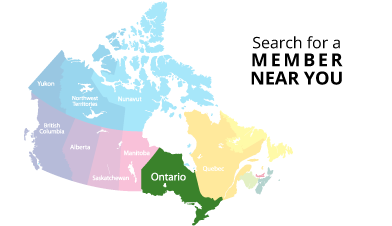Well Owners
Wells on your Property
Information and rules for residential well owners for the proper location, construction, maintenance and abandonment of a well.THE LAW AND YOUR WELL
If you have a well on your property, you are responsible for it.
You must follow specific rules for maintaining and, if necessary, abandoning a well to help protect the safety of your water and the groundwater resource.
If you are considering constructing a new well on your property, or you need to upgrade your well, there are rules that a person constructing the well must follow to help protect your water.
The law sets out minimum rules for:
- licensing individuals and companies who construct a well
- choosing a location for a new well (i.e., siting)
- constructing a well
- maintaining a well
- abandoning a well (plugging and sealing it)
- reporting well activities (e.g., completing and submitting well records)
The law coverall wells, including:
- private, residential and domestic wells
- agricultural, commercial, and industrial wells
- municipal, communal and public wells
- test holes and dewatering wells
When to Abandon a well
As a well owner, you must plug and seal a well that is not being:
- used as a well
- maintained for future use as a well
- A well purchaser must immediately abandon a new well if it is dry, unless you, as a residential land owner, agree in writing to maintain the well for future use as a well.
If construction is discontinued before your new well is completed, the person constructing the well must immediately abandon the new well.
Unless you have received written consent from the Wells Program Director, you must properly abandon (plug and seal) your well if it:
- produces mineralized water
- produces water that is not potable and you do not contact the local medical officer of health or you did not follow the advice of the local medical officer of health
- contains natural gas or other gas and you do not take steps to manage the gas to prevent a hazard
- permits any movement of natural gas, contaminants or other materials that may impair the groundwater and you do not take steps to correct the problem
- isn't constructed or sited using the materials or methods required by the law and you have not taken steps to correct the problem or the steps you have taken failed.
Exemptions from the requirements to have received written consent from the Director to not abandon your well include:
- test holes and dewatering wells that produce water that is either mineralized or not potable
- wells used for agriculture but not for human drinking water.
How Many Wells And Abandoned Wells Are There In Ontario?
From the late 1940s, well contractors have been required to report drilled and bored well construction operations to the well owner and the Ontario Government. In the late 1980s, all persons constructing dug wells were required to complete well records. Well records are required to be submitted to the Ministry to document many well construction, alteration or abandonment of wells in Ontario. Over 700,000 well records have been submitted to the Ministry over the years with approximately 15,000 new well records received each year.
At this time no one knows exactly how many wells or abandoned wells exist in the Province of Ontario due to the evolving reporting requirements for wells.
What Problems Do Improperly Abandoned Wells Present?
Improperly abandoned wells may pose including any or all of the following problems:
They can act as pathways for the movement of near-surface contaminants into aquifers (groundwater supplies).
They can pose a threat to children, adults or animals who may fall into large diameter openings and become trapped or injured (Figure 14-3).
They can interconnect fresh groundwater with salty, mineralized or contaminated groundwater zones and allow the mineralized or contaminated water to enter into fresh water zones.
They can present a hazard to equipment and vehicles.
How Can I Find Out If Have An Improperly Abandoned Well On My Property?
A person may wish to inspect their property for signs of an existing unused well. Some indicators of unused wells include any of the following:
- pipe sticking out of the ground,
- concrete slab with or without a hand pump,
- ring of rocks or bricks,
- windmill,
- old shed (e.g., pump house),
- wooden slab on the ground,
- depression in the ground, or
- flowing water, or constant wet area on the ground surface
Find a contractor
Well contractors must:
- be licensed
- use licensed well technicians who have the proper class of licence for the work to be done
Licensed contractors are required to use licensed well technicians who have the proper class of licence to conduct or supervise any work being done on your well. Ask to see the licences of your well contractor and well technician (e.g.driller, digger or pump installer) before they begin work on your well.
If you are having a well constructed or repaired or when a pump is installed in an existing well the person you hire to do the work is required to give you a well owner information package to assist with properly maintaining and abandoning your well.
Members of the Ontario Ground Water Association are held to a strict Code of Ethics to ensure that the highest principles of honesty, integrity, fair dealing and professionalism in the ground water construction and drilling industry are met. Find a OGWA Member Contractor in your area.
For the OGWA complete code of Ethics "click here".
Stay up to date!
Find the most up-to-date version of the legislation and regulation about well licensing, construction, maintenance, abandonment, reporting and documentation at:

Find a OGWA Member
Contractor in your area.

